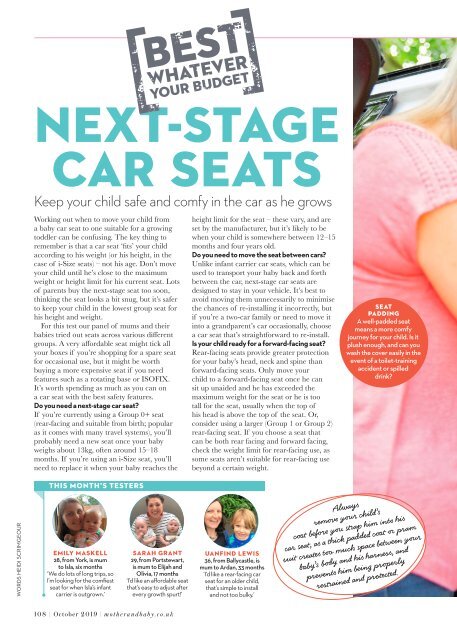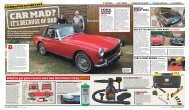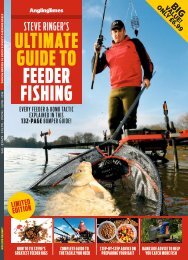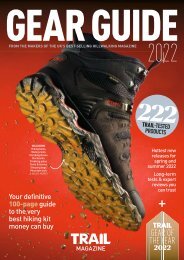You also want an ePaper? Increase the reach of your titles
YUMPU automatically turns print PDFs into web optimized ePapers that Google loves.
Next-stage<br />
car seats<br />
Keep your child safe and comfy in the car as he grows<br />
Working out when to move your child from<br />
a baby car seat to one suitable for a growing<br />
toddler can be confusing. The key thing to<br />
remember is that a car seat ‘fits’ your child<br />
according to his weight (or his height, in the<br />
case of i-Size seats) – not his age. Don’t move<br />
your child until he’s close to the maximum<br />
weight or height limit for his current seat. Lots<br />
of parents buy the next-stage seat too soon,<br />
thinking the seat looks a bit snug, but it’s safer<br />
to keep your child in the lowest group seat for<br />
his height and weight.<br />
For this test our panel of mums and their<br />
babies tried out seats across various different<br />
groups. A very affordable seat might tick all<br />
your boxes if you’re shopping for a spare seat<br />
for occasional use, but it might be worth<br />
buying a more expensive seat if you need<br />
features such as a rotating base or ISOFIX.<br />
It’s worth spending as much as you can on<br />
a car seat with the best safety features.<br />
Do you need a next-stage car seat?<br />
If you’re currently using a Group 0+ seat<br />
(rear-facing and suitable from birth; popular<br />
as it comes with many travel systems), you’ll<br />
probably need a new seat once your baby<br />
weighs about 13kg, often around 15–18<br />
months. If you’re using an i-Size seat, you’ll<br />
need to replace it when your baby reaches the<br />
height limit for the seat – these vary, and are<br />
set by the manufacturer, but it’s likely to be<br />
when your child is somewhere between 12–15<br />
months and four years old.<br />
Do you need to move the seat between cars?<br />
Unlike infant carrier car seats, which can be<br />
used to transport your baby back and forth<br />
between the car, next-stage car seats are<br />
designed to stay in your vehicle. It’s best to<br />
avoid moving them unnecessarily to minimise<br />
the chances of re-installing it incorrectly, but<br />
if you’re a two-car family or need to move it<br />
into a grandparent’s car occasionally, choose<br />
a car seat that’s straightforward to re-install.<br />
Is your child ready for a forward-facing seat?<br />
Rear-facing seats provide greater protection<br />
for your baby’s head, neck and spine than<br />
forward-facing seats. Only move your<br />
child to a forward-facing seat once he can<br />
sit up unaided and he has exceeded the<br />
maximum weight for the seat or he is too<br />
tall for the seat, usually when the top of<br />
his head is above the top of the seat. Or,<br />
consider using a larger (Group 1 or Group 2)<br />
rear-facing seat. If you choose a seat that<br />
can be both rear facing and forward facing,<br />
check the weight limit for rear-facing use, as<br />
some seats aren’t suitable for rear-facing use<br />
beyond a certain weight.<br />
SEAT<br />
PADDING<br />
A well-padded seat<br />
means a more comfy<br />
journey for your child. Is it<br />
plush enough, and can you<br />
wash the cover easily in the<br />
event of a toilet-training<br />
accident or spilled<br />
drink?<br />
Words Heidi Scrimgeour<br />
This month’s testers<br />
Emily Maskell<br />
28, from York, is mum<br />
to Isla, six months<br />
‘We do lots of long trips, so<br />
I’m looking for the comfiest<br />
seat for when Isla’s infant<br />
carrier is outgrown.’<br />
Sarah Grant<br />
29, from Portstewart,<br />
is mum to Elijah and<br />
Olivia, 17 months<br />
‘I’d like an affordable seat<br />
that’s easy to adjust after<br />
every growth spurt!’<br />
Uanfind Lewis<br />
36, from Ballycastle, is<br />
mum to Ardan, 33 months<br />
‘I’d like a rear-facing car<br />
seat for an older child,<br />
that’s simple to install<br />
and not too bulky.’<br />
Always<br />
remove your child’s<br />
coat before you strap him into his<br />
car seat, as a thick padded coat or pram<br />
suit creates too much space between your<br />
baby’s body and his harness, and<br />
prevents him being properly<br />
restrained and protected.<br />
108 | <strong>Oct</strong>ober 20<strong>19</strong> | motherandbaby.co.uk

















